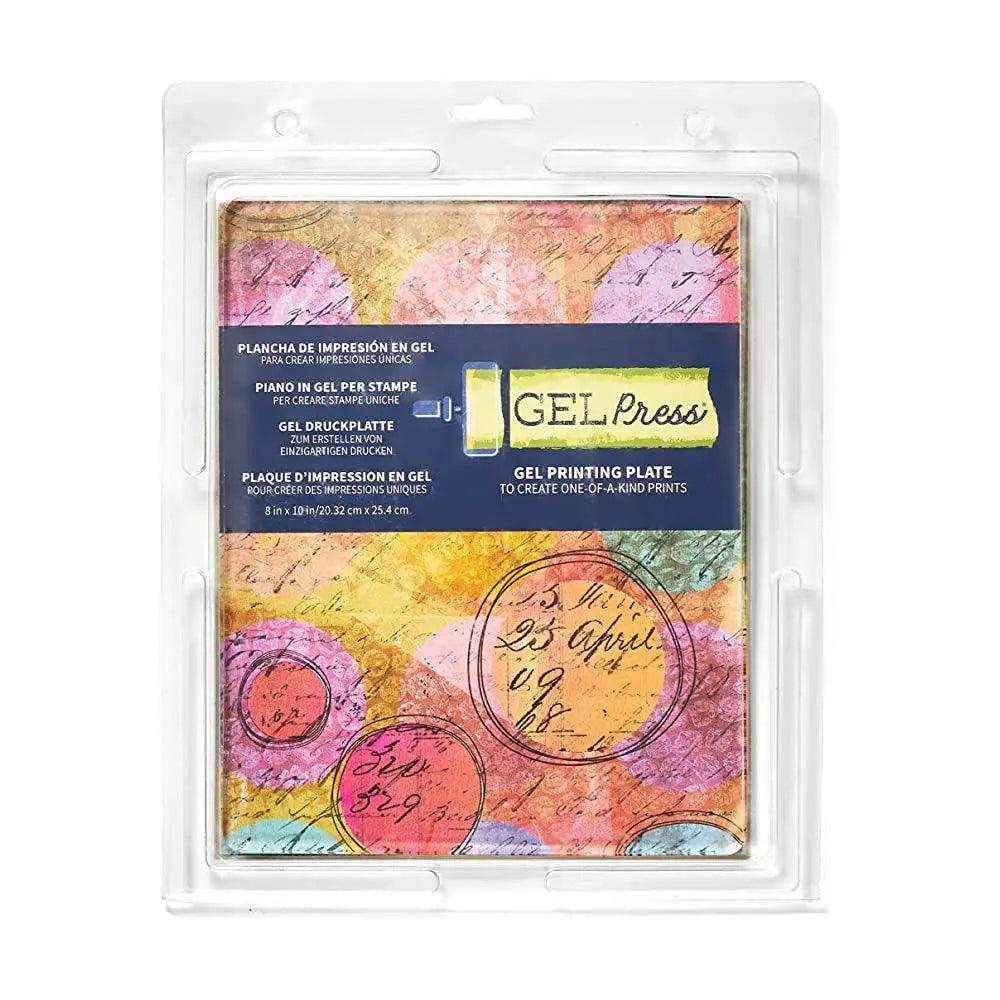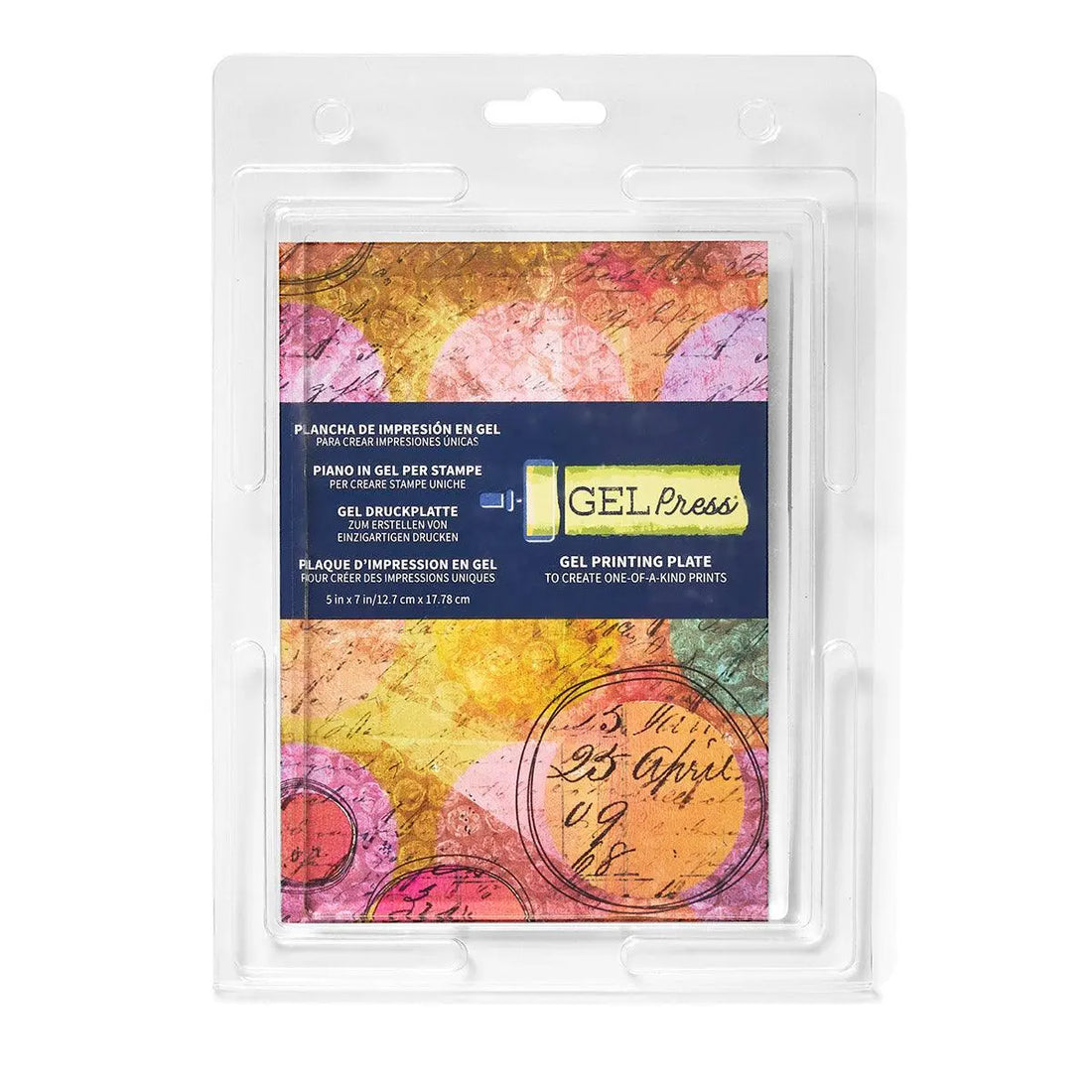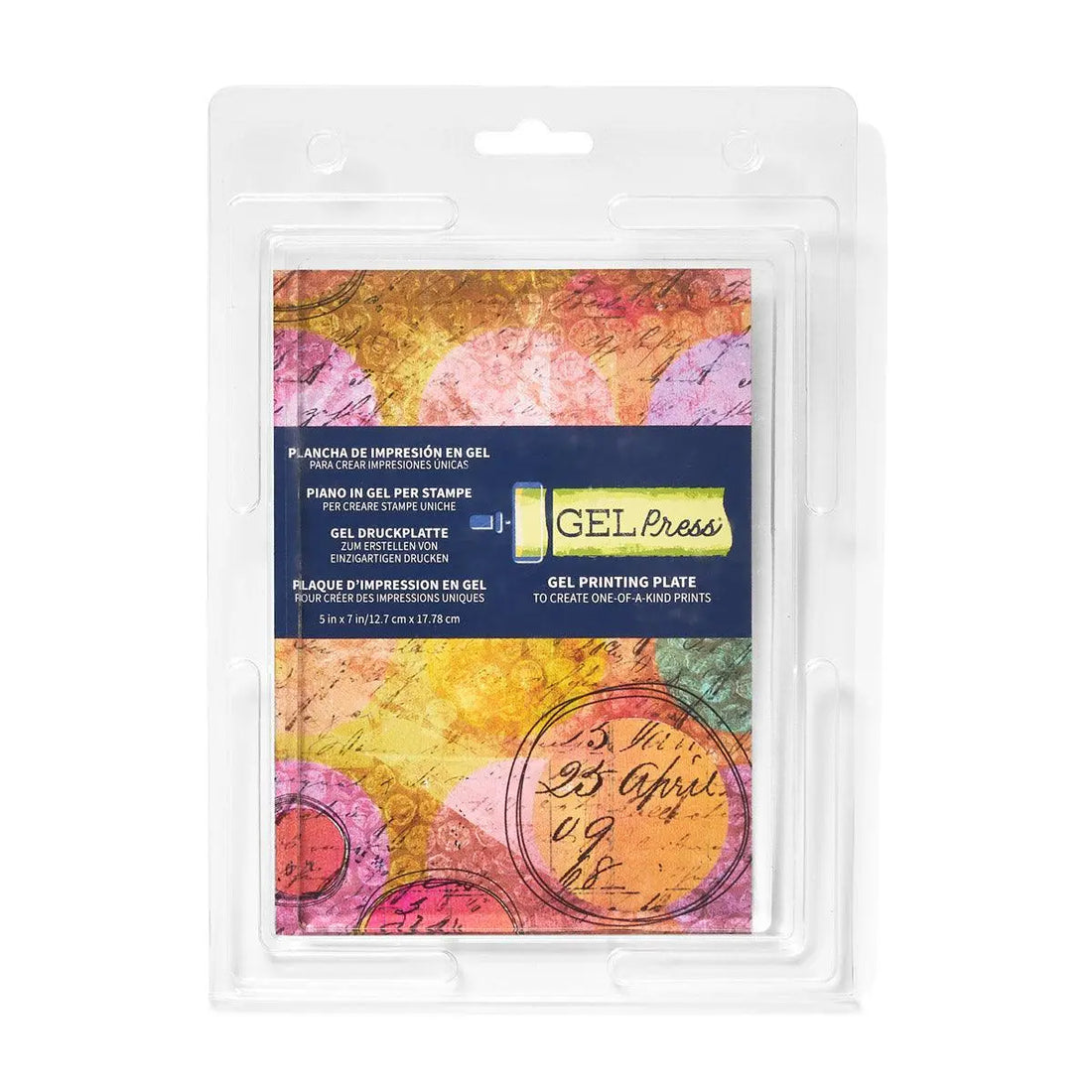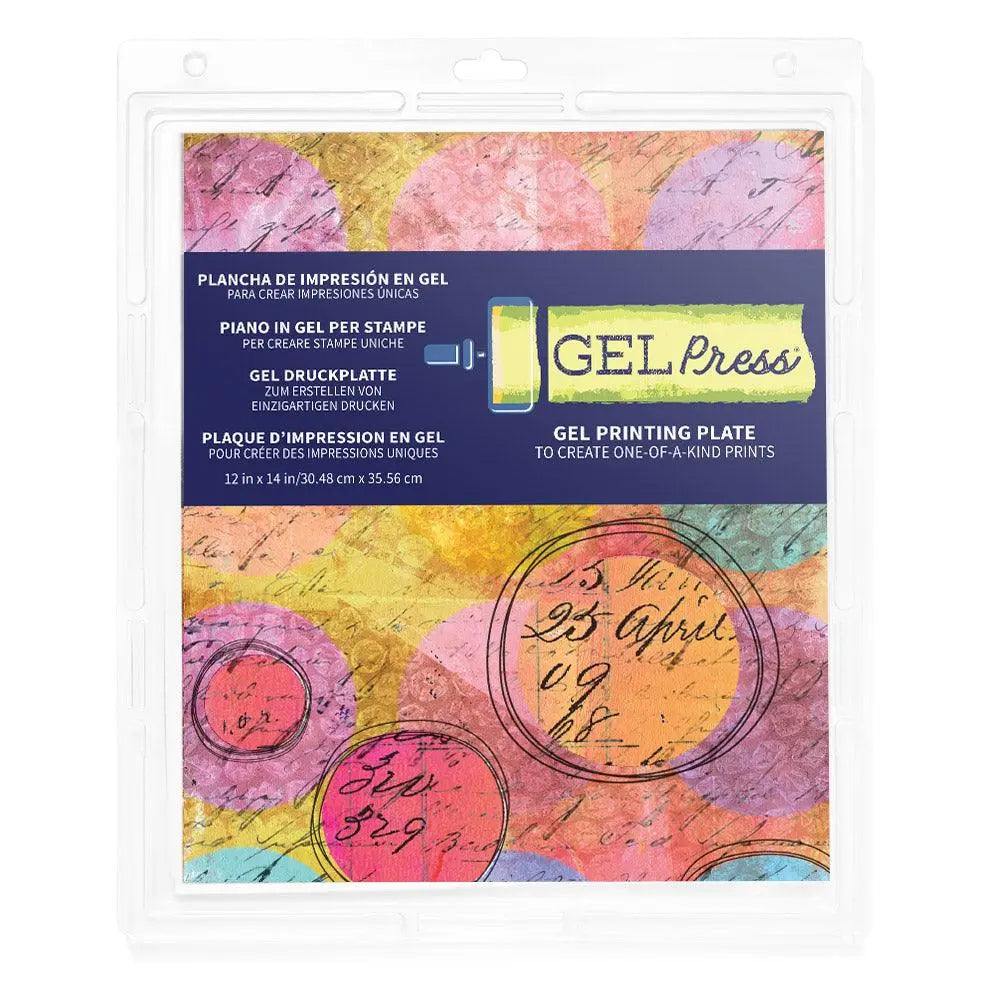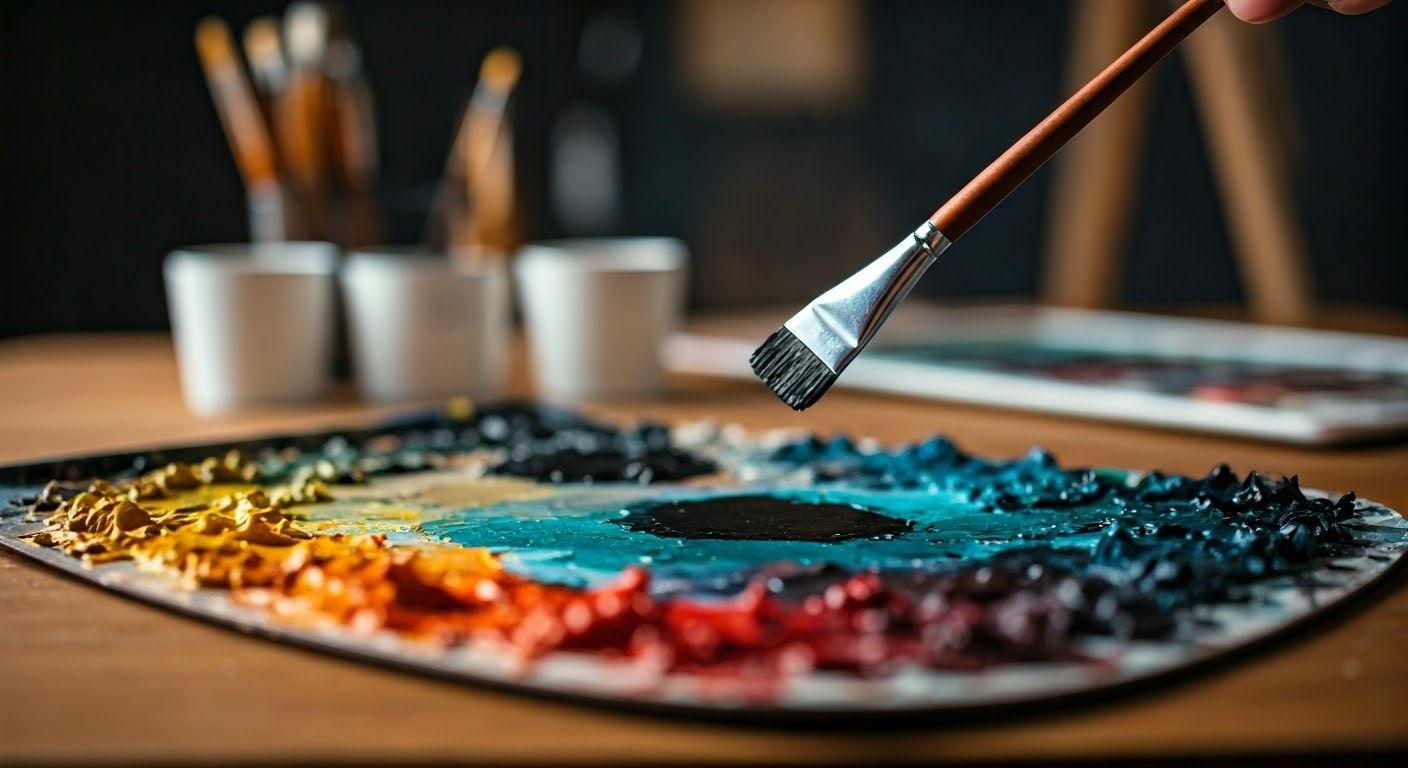
🎨 Is Black a Color? The Big Art Debate, Unpacked
Ever caught yourself staring at a brayer loaded with black ink thinking, “Is this even a color?” You’re not the only one. This deceptively simple question has ignited debates for centuries — between artists, scientists, and philosophers alike.
In this post, we’ll unravel the tangled threads of science, symbolism, technique, and history to explore why black may be the boldest “color” in your creative toolkit. Whether you're layering it on a gel plate or inking a dramatic silhouette, black plays a role that goes far beyond basic color theory.
Key Highlights
-
The debate over black as a color depends on art style, time period, and personal perspective.
-
Scientifically, black absorbs all light — but in art, it’s a powerful tool for emotion, contrast, and form.
-
From prehistoric caves to contemporary art studios, black has always made a bold statement.
-
Artists use black to evoke mystery, drama, elegance, or even rebellion.
Techniques like gel printing, inking, and mixed media bring black to life in countless creative ways.
Color Theory 101: Where Does Black Fit In?
Let’s start with the basics. In color theory, colors have three properties:
- Hue (e.g., red, blue, yellow)
- Saturation (how vivid or muted a color is)
- Value (how light or dark it is)
Black doesn’t have a hue — which is why it's considered achromatic, or “without color” (Albers, 1963). But in pigment-based systems (like painting or printing), black is often created by mixing multiple colors or using carbon-based materials. This is where the science gets murky and the art gets expressive.
In printmaking, black isn’t just filler — it anchors the composition. It’s drama in a single stroke. On a gel plate, it becomes the heartbeat of a layered monoprint — adding texture, tone, and energy.
Artists Know: Black Is More Than a Color
Artists view black not as an absence, but as a presence — a mood, a shape, a voice that resonates across time and medium. It’s not a gap to be filled but a powerful visual force that shapes how we see, feel, and interpret an artwork.
In the hands of an artist, black becomes a language. It’s used to whisper secrets in the shadows, to scream with bold outlines, or to sing with subtle gradients. Whether you're adding stark contrast to an ink wash or outlining bold forms in acrylic, black commands attention — not through brightness, but through weight. It draws the eye inward, toward depth and nuance, often acting as the emotional core of a composition.
Symbolically, black is incredibly versatile. It can communicate mourning, mystery, sophistication, or rebellion, depending on the artist’s intent and context. In Western art, it often signals solemnity or restraint. In fashion and design, it's associated with elegance and authority. In protest art and radical movements, black has carried the weight of defiance and resistance (Batchelor, 2000).
Technically, black takes on a foundational role across mediums. In ink drawing, black often provides the framework — the skeletal lines that support everything else. In mixed media, black defines negative space, creates contrast, and makes other colors appear more vibrant. Acrylic painters use black not just to darken hues, but to give their works dimension — layered, scumbled, glazed — black becomes a visual texture, like velvet or smoke.
Even psychologically, black exerts influence. According to visual perception studies, dark tones can increase the sense of depth, gravity, and seriousness in a piece (Arnheim, 1974). When applied skillfully, black doesn’t flatten a painting — it deepens it. It becomes a shadowy landscape of its own, rich, dynamic, and alive.
A Look Back: Black in Art History
Black is one of the most ancient pigments ever used by humans — not just as a practical medium, but as a symbolic one steeped in ritual, power, and narrative. Its story is carved into stone walls and written into sacred texts long before it adorned stretched canvas.
In prehistoric times, black emerged from burnt wood — charcoal. Early humans in places like Lascaux and Chauvet caves used it to depict hunting scenes, animals, and human hands, pressing them onto walls as both documentation and spiritual expression. These primitive marks, made in black, became humanity’s first known efforts to communicate visually — a testimony to black’s foundational role in art (Finlay, 2002).
Fast forward to the medieval period, and black took on a more refined, almost sacred role. In illuminated manuscripts, black ink wasn’t just functional — it was structural. It carried the sacred word, shaped the elegant lettering, and created dramatic contrast with gold leaf, red cinnabar, and blue lapis. Through these visual contrasts, black elevated the divine by making it shine brighter (Gage, 1999).
The Renaissance brought black further into the spotlight, both technically and emotionally. Artists like Caravaggio and Rembrandt became masters of chiaroscuro — a technique defined by the interplay of light and dark. In their hands, black was no longer just a background; it sculpted faces, revealed form, and evoked emotional depth. Their paintings often emerge from near-total darkness, with figures seemingly lit by candlelight, their expressions intensified by black’s enveloping shadows (Gombrich, 2000).
As art evolved, black became more than pigment — it became a philosophy. It stood for realism, spirituality, gravity, and drama. Its ability to ground an image, direct a viewer’s eye, or elevate a subject’s presence made it indispensable across centuries.
From the ash-covered caves of early humans to the vaulted ceilings of Renaissance cathedrals, black has never been absent. Instead, it has continuously adapted to the needs of each era — a quiet yet commanding thread running through the tapestry of art history.
When Black Steals the Show: Iconic Moments
Black has been used as a central element in many iconic artworks and genres:
- Pablo Picasso’s Guernica: Highlights war's chaos using bold blacks and grays (Tsujimoto, 1988).
- Kazimir Malevich’s Black Square: Uses black as a radical, abstract centerpiece (Malevich, 1915).
- Film Noir: Uses deep shadows and black-and-white cinematography to convey moral ambiguity.
- East Asian Ink & Wash Painting: Uses black ink for spiritual and emotional nuance.
Black in Contemporary Art
In the modern and contemporary art worlds, black has shed any remaining assumptions of being merely neutral or background. Instead, it has emerged as a central theme, a material for experimentation, and a voice for emotional intensity.
Artists like Franz Kline, a key figure in Abstract Expressionism, turned black into a raw, kinetic force. His sweeping, energetic brushstrokes—often composed almost entirely of thick, black paint on white canvas—do more than suggest form. They embody action, gesture, and inner turbulence. Kline’s black lines aren’t outlines; they are the structure, emotion, and subject rolled into one. The absence of color, in his case, amplifies the drama and directs full attention to the motion itself (Yau, 2004).
In stark contrast, minimalist artists like Donald Judd used black to strip away metaphor and narrative, focusing on space, repetition, and form. In Judd’s work, black becomes meditative. It removes distraction, allowing the viewer to experience the physicality of the artwork without symbolic interference. This purity of experience—free from interpretation—is central to minimalism’s ethos, and black makes it possible (Gage, 1999).
For contemporary printmakers and mixed media artists, black remains a foundational tool. In gel printing and monoprints, black ink is often the starting point, offering strong outlines or underlayers that anchor visual complexity. Alternatively, it’s used as the final layer, sealing the image, adding contrast, or bringing forward textured details. In both cases, black serves as a sort of visual punctuation—a way to emphasize, organize, and heighten the narrative of a piece (Arnheim, 1974).
Even in conceptual and protest-based art, black carries strong visual weight. It can imply mourning, silence, or resistance—emotions that remain highly relevant in today’s cultural dialogues. Its ambiguity, its refusal to be pinned down to one meaning, makes it an ideal color for artists responding to a complex world (Batchelor, 2000).
From gestural abstraction to meditative minimalism, from layered printmaking to radical conceptual art, black endures as a powerful ally in the artist’s toolkit. It defines form, holds space, and often says the most with the least.
Techniques That Let Black Shine
Black isn’t just a color — it’s a deliberate material choice. Every medium that delivers black carries with it a unique voice, a specific texture, and a different level of control or chaos. Artists select black not just for its tone, but for the way it behaves — how it absorbs light, marks the surface, or responds to layering. In this sense, choosing black is as much about tactility as it is about symbolism.
Popular Black Media
-
Charcoal offers a soft, smoky quality, perfect for studies, expressive shading, or dramatic chiaroscuro effects. Its ephemeral nature allows for blending and erasure, giving black a ghostly or transitional quality. From cave drawings to academic figure studies, charcoal has carried black’s raw and elemental voice through the ages (Finlay, 2002).
-
Ink, on the other hand, is precise, fluid, and bold. Used extensively in calligraphy, East Asian brush painting, and modern illustration, black ink delivers crisp edges or delicate gradients with a flick of the wrist. It has long been the medium of storytelling — from ancient manuscripts to minimalist line art (Gombrich, 2000).
-
Acrylic paint brings versatility. With its fast-drying nature and smooth layering potential, acrylic allows artists to use black in both transparent and opaque applications. Artists can build up depth with glazing, or let black dominate the canvas with solid, sculptural brushstrokes (Arnheim, 1974). The result? A material that supports both spontaneity and structure.
-
Gel printing ink, especially in monoprinting and mixed media, transforms black into texture. On a gel plate, black ink becomes part of the surface’s topography. When manipulated with stencils, brayers, or combs, it creates dynamic patterns, subtle impressions, or high-contrast drama. In this context, black becomes more than a color — it becomes surface energy (Finlay, 2002).
Techniques That Activate Black
How black is applied matters just as much as what it’s made of. Techniques like:
-
Stippling and hatching break black into rhythmic marks, using it to create depth, weight, or volume.
-
Layering and glazing give black new dimensions — turning it from flat space into a rich visual field that shifts under light.
-
Masking, monoprinting, and subtractive texture techniques allow black to act like negative space — revealing form by what it omits.
These methods highlight black’s most paradoxical strength: its ability to be both dominant and subtle, both foreground and shadow. As Albers (1963) noted in his studies on visual perception, black isn't simply static — it changes meaning based on what surrounds it.
Whether you're drawing, printing, painting, or experimenting, the materiality of black offers a world of possibilities. It’s not just what you use — it’s how you use it that determines the story black tells.
Final Thoughts: Is Black a Color?
Scientifically? Maybe not. Artistically? Absolutely.
Black is a symbol, a mood, a statement. It’s an invitation to play with light, space, and feeling. So next time you're working on a gel print, an ink drawing, or a moody acrylic, remember: black isn’t just a color. It’s your boldest brushstroke.
References
· Albers, J. (1963). Interaction of Color. Yale University Press.
· Arnheim, R. (1974). Art and Visual Perception: A Psychology of the Creative Eye. University of California Press.
· Batchelor, D. (2000). Chromophobia. Reaktion Books.
· Finlay, V. (2002). Color: A Natural History of the Palette. Random House.
· Gage, J. (1999). Color and Culture: Practice and Meaning from Antiquity to Abstraction. University of California Press.
· Gombrich, E. H. (2000). The Story of Art (16th ed.). Phaidon Press.
· Malevich, K. (1915). Black Square. In various retrospective collections.
· Tsujimoto, K. (1988). Images of War: The Artist’s Perspective. Tokyo Museum of Contemporary Art.
· Yau, J. (2004). Franz Kline: The Color of Drawing. Mitchell-Innes & Nash.


